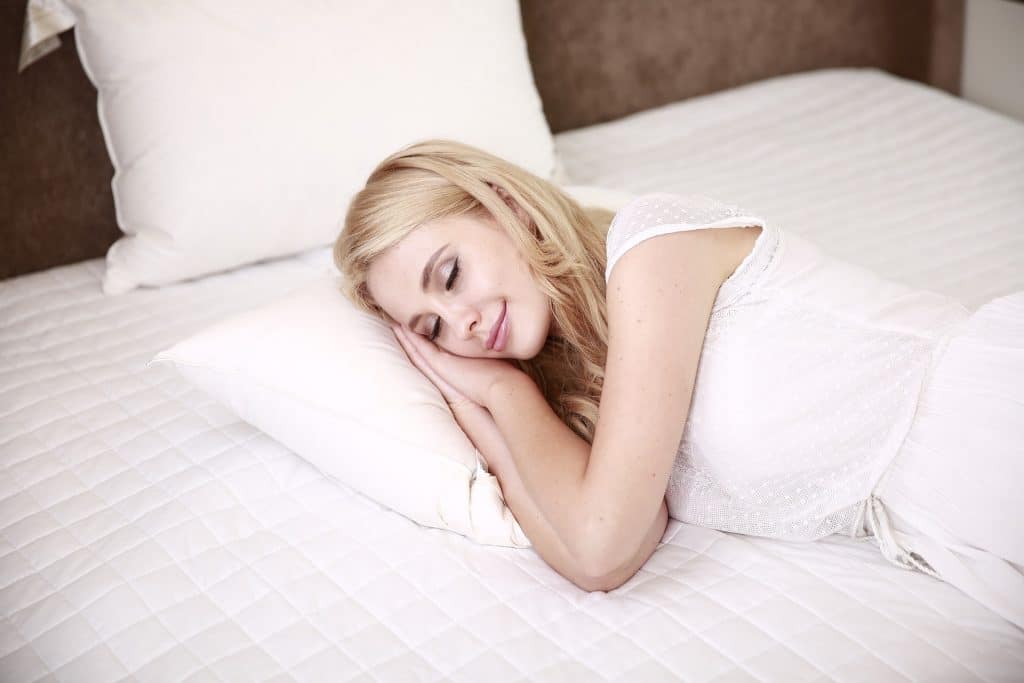A plethora of sleep apps, wearables, and devices have been invented to help Americans to sleep better. And, with over 40 million Americans suffering from sleep disorders, this industry is only expected to continue growing. In this article, we’re going to take a look at some of the ways technology has changed the sleep industry as of April 2020.
Related Article: 5 Golfing Technologies That Will Help Improve Your Game

Wake-up Lights
Blackout curtains are used by many Americans, but they may not be the best solution for a good night’s sleep. While they do keep the room nice and dark, not many of us enjoy being blinded by the brightness, the second they are opened. To combat this, tech companies have created alternatives. The Genesis Lamp, for example, monitors your sleep schedule and gets brighter as you near wake up, giving you a much more comfortable morning. It has even been used by NASA!
Read Article: Sleep and the Role it Plays in a Healthy Heart
Sleep Apps
Parents of young babies will tell you how much of a godsend white noise machines can be. They somehow manage to get even the most sleep-resistant infants to fall asleep. Moving on from this, technology companies have begun to develop sleeps apps. You can purchase these with a white noise effect if you want to, but there are many others that play soothing music and sounds to help you fall asleep. These can be beneficial for adults and children of all ages and are especially useful for those who suffer from anxiety.
Memory Foam
The way we sleep hasn’t changed much over the last few decades. The majority of us still sleep in a bed, with a pillow under our head, and a blanket or duvet covers us. However, mattress technology has definitely improved with memory foam being one of technology’s greatest achievements. While first used in mattresses in 1966, memory foam has improved considerably and can now take your sleep to the next level. Today’s choices are as varied as the sleepers that use them, and many Americans now specifically search for memory foam when purchasing a new mattress.
Temperature Regulators
Studies have shown that the perfect temperature for a good night’s sleep is anywhere between 60 and 67 degrees. If you think the temperature of your bedroom is affecting your sleep, why not invest in a temperature regulator? A temperature regulator usually works alongside a heater, which will turn on and off throughout the night to maintain a consistent temperature. You can also purchase whole-house heating devices that do this too, such as NEST. HVAC systems can also be purchased with temperature regulators; these are ideal for people who live in hot climates.
Sleep Data
With devices like the Fitbit now able to provide users with sleep scores, more people than ever before are becoming aware of their quality of sleep. While these sleep scores aren’t from clinical devices – and so can’t be used in a credible way – they can prove to be a good conversation starter for those who struggle with exhaustion during the day. Sleep data can point to inconsistencies in sleep-wake schedules and help you to determine how much REM sleep you are getting each night. If the data points to a problem, this can then be discussed with a medical professional, with clinical help then able to be provided if a problem is apparent.
Just one night of bad sleep can put you in a bad mood and decrease your productivity levels. Regular bad sleep can lead to anxiety and depression. If you have been struggling with your sleep, it’s a good idea to speak to a medical professional and consider the technologies described above.
Read Article: 4 Ways to Stay Healthy When Stuck Indoors
